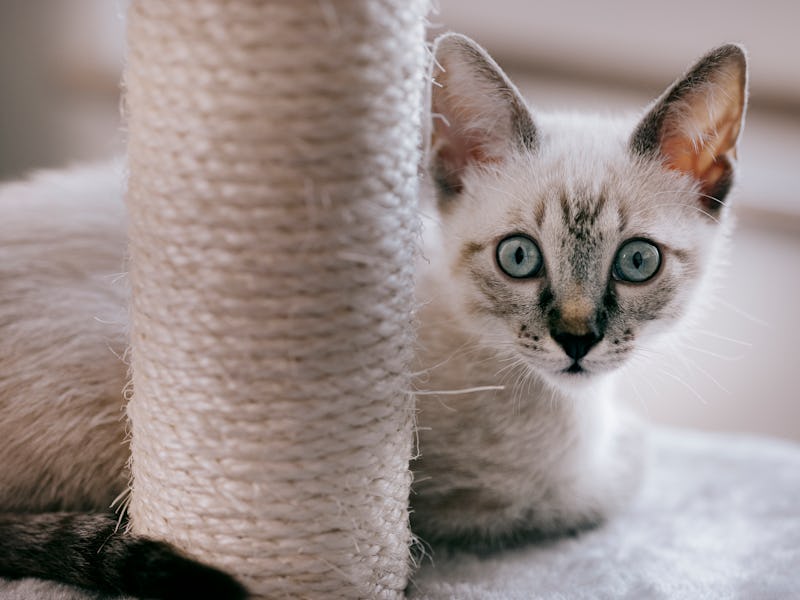Why Does My Cat Ignore Its Scratching Post? A Veterinarian Reveals An Ideal Solution
It’s all about meeting your cat’s needs.

It’s a situation many a cat owner is familiar with: You buy your feline an elaborate, expensive scratching post only for them to completely ignore it and sink their claws into your couch instead.
While a cat’s fussy diva quirks are often tolerated, even adored by the humans who love them, scratching is not one of them. According to a 2019 analysis by the American Veterinary Medical Association, destructive scratching accounts for 15 to 24 percent of behavioral complaints owners have against their cats. A 2020 report that studied a Texas-based animal shelter discovered that around 11 percent of adopted cats were surrendered because of "destructive tendencies."
Pet owners may even elect to declaw their felines, a widely considered inhumane procedure where a cat’s claw and the surrounding bone are surgically removed. So if your beloved tabby has taken a liking to your furniture, fear not. There are ways to redirect his inner tiger tendencies to keep you and him living in blissful, destruction-free content.
Why do cats scratch?
First, it’s important to understand exactly why cats like to rip their claws into things. This completely normal, instinctual behavior serves many different purposes, the main one being marking of territory, Katherine Houpt, professor emeritus of behavior medicine at Cornell University College of Veterinary Medicine, tells Inverse.
“A secondary [purpose] is to help get rid of the old claw,” Houpt explains.
Other reasons for scratching include defense against attack and, surprisingly, a good stretching exercise. Cats like to train their claws on objects that are vertically or horizontally placed. Houpt says, most importantly, these scratchers are often sturdy structures, like couches, as any wobbling will deter a cat from scratching.
Training out the destruction
Knowing this can be to your advantage. Choose a scratching post you know your cat will like: A large, solid, vertical or horizontal post is preferred. Cats prefer large structures because they can fully stretch their bodies while using them. The material also matters. Cats like durable natural fibers like sisal and jute (more so the former than the latter) for their rough texture.
If you’ve tried sisal-covered scratch posts of both horizontal and vertical varieties and still had no luck, Houpt recommends rotating where you normally put the scratchers to places near where you tend to be.
“Cats seem to prefer to scratch in a place where we are, so I think it’s sort of social,” she says.
You could try enticing a cat to her scratcher with catnip, but that may or may not work. Houpt says catnip encourages another behavior unrelated to scratching. Some cats are even born without the “catnip” gene, so they may not respond to it.
If your feline still insists on tearing up your Pinterest-worthy couch, you can try training them out of the habit with deterrents like a little squirt from a can of compressed air or scented sprays cats dislike, smells like citrus or coffee grounds.
You can also try to make your furniture less appealing, tactile-wise. This includes wrapping or covering an oft-scratched area in a fabric with a smoother texture or double-sided sticky tape.
Houpt advises against declawing your cat since that can lead to many health concerns and persisting pain, not to mention aggravating any underlying behavioral issues. Punishment with harsh words or tone won’t work either; it’s better to reward your cat’s good scratching behavior with a treat and some love.
“Punishment for suppressing behavior doesn’t change the animal’s motivation,” says Houpt. “It's better to meet their needs instead of punishing them.”
This article was originally published on